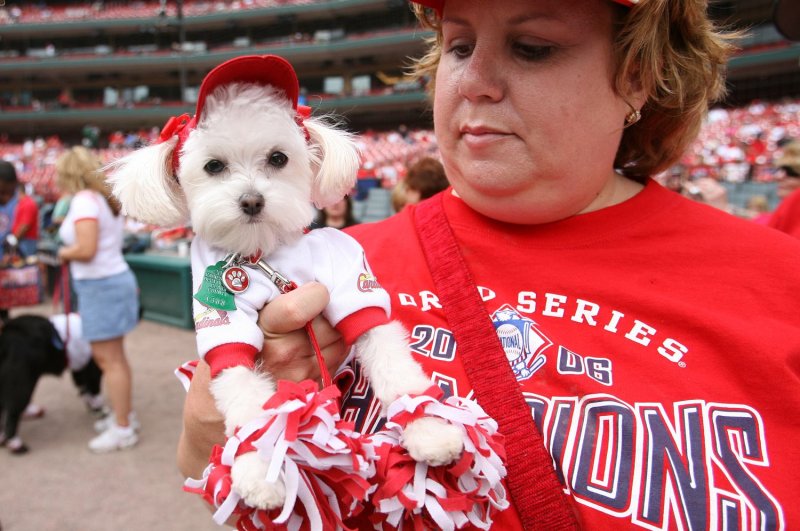New research suggests dogs respond different to different human facial expressions. Photo by UPI Photo/Bill Greenblatt |
License Photo
June 20 (UPI) -- According to a new study, dogs understand a range of human facial expressions and respond accordingly.
If you're a dog owner, your furry friend can probably tell when you're angry, fearful, happy or surprised. Researchers found dogs who witness a look of surprise on a person's face tend to turn their heads to the right. And when dogs recognize the facial signatures of a bad day at work, their heart rate tends to rise.
Dogs have lived alongside humans for thousands of years. Their survival and wellbeing depends on their ability to understand and communicate with humans. Previous studies have detailed canines' ability to recognize the tone of human voices, the significance of body posture and even the meaning of different facial expressions.
For the latest study, scientist wanted to better understand how dogs respond to different facial expressions.
Researchers placed photographs of human faces expressing various emotions in front of feeding dogs. The photographs, placed directly in the dogs' line of sight, featured human faces expressing anger, fear, happiness, sadness, surprise and disgust. Some faces featured a neutral expression.
The look of anger, fear and happiness, all intense emotional cues, elicited an increase in cardiac activity, suggesting an uptick in stress. After seeing these facial expressions, the dogs took longer to return their attention to their bowl of food. The dogs also tended to turn their heads to the left.
The look of surprise on human faces proved less alarming to the feeding dogs, but tended to trigger a head turn to the right. The reaction suggests dogs perceive the look of surprise as a neutral expression, researchers said.
"Clearly arousing, negative emotions seem to be processed by the right hemisphere of a dog's brain, and more positive emotions by the left side," Marcello Siniscalchi, researcher at the University of Bari Aldo Moro in Italy, said in a news release.
The study's findings, published this week in the journal Learning and Behavior, confirm the importance of the right side of the brain in governing the fight or flight response in mammals.















